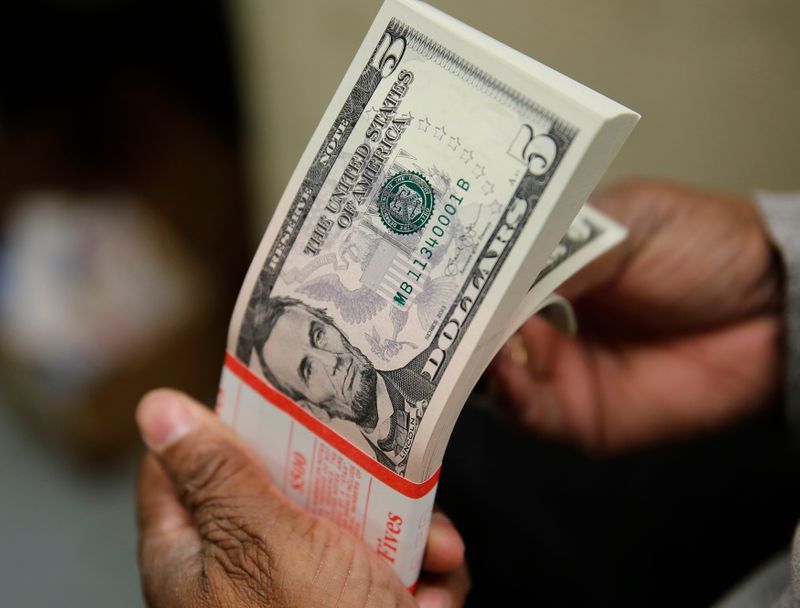TOKYO (Reuters) -The U.S. dollar held firm on Wednesday on the back of tariff concerns and tense Russia-Ukraine negotiations, while the New Zealand dollar slid after the central bank delivered a super-sized interest rate cut.
The Reserve Bank of New Zealand reduced its benchmark rate by 50 basis points to 3.75% on Wednesday as widely expected. The central bank has now cut rates by 175 basis points since August as the central bank races to boost a sluggish economy and curb rising unemployment.
The kiwi was last down 0.3% at $0.5687 following the decision and bank commentary that suggested more cuts were likely.
In the broader market, investors sized up the latest note in U.S. President Donald Trump’s tariff crescendo and uncertainty after initial Russia-Ukraine peace talks finished without Kyiv or Europe at the table.
A majority of economists polled by Reuters this month expect another 50-basis-point cut in April.
Ukraine President Volodymyr Zelenskiy said no peace deal could be made behind his back. He postponed his visit to Saudi Arabia planned for Wednesday until March 10 to avoid giving “legitimacy” to the U.S.-Russia talks.
Russia hardened its demands, notably insisting it would not tolerate the NATO alliance granting membership to Kyiv.
The Trump administration said on Tuesday it agreed to hold more talks with Russia on ending the war in Ukraine.
Hopes of a peace agreement buoyed the euro to a two-week high last week, but the EU bloc currency has slid in recent days. It was last 0.03% lower at $1.0442.
3rd party Ad. Not an offer or recommendation by Investing.com. See disclosure here or remove ads.
“The euro (is) a little unsettled by the clear divisions between the U.S. and Europe regarding the war in Ukraine,” said Sean Callow, senior FX analyst at InTouch Capital Markets.
The greenback shot up on Tuesday, helped by euro softness, but remains not far off a two-month low of 106.56 touched on Friday despite more tariff pledges.
Trump said on Tuesday he intends to impose auto tariffs “in the neighborhood of 25%” and similar duties on semiconductors and pharmaceutical imports.
“So long as Trump is viewed as the boy who cried wolf on tariffs, chunky USD long positions will come under pressure,” Callow said.
Trump has unleashed a steady crush of levies and tariff threats in the first month of his presidency, fuelling uncertainty about the impact both abroad and domestically.
Investors were awaiting the release of minutes of the Federal Reserve’s January meeting due later in the day for clues on how policymakers are weighing the risk of a global trade war.
Markets have priced in about 35 basis points of cuts for 2025.
The dollar index, which measures the greenback against a basket of rivals, rose 0.04% to 107.04.
The yen strengthened 0.05% to 152 per dollar. Japan’s solid October-December GDP data on Monday, coupled with recent strong inflation, has bolstered rate hike bets.
Prospects of a rate hike at the Bank of Japan’s July meeting are growing but questions remain about the pace and extent of continued tightening.
The spotlight will be on board member Hajime Takata, who is scheduled to give remarks on Wednesday, and national CPI data released on Friday.
3rd party Ad. Not an offer or recommendation by Investing.com. See disclosure here or remove ads.
Sterling was flat at $1.2613 after brushing a two-month high of $1.2641 in early trade on Wednesday. An inflation reading for the UK is scheduled later on Wednesday, following Tuesday’s data showing accelerating British wage growth.
The Australian dollar ticked down 0.07% to $0.63495 after data showed domestic wages rose at the slowest annual pace in more than two years in the fourth quarter.
The Reserve Bank of Australia cut rates as expected on Tuesday but cautioned on further easing.



